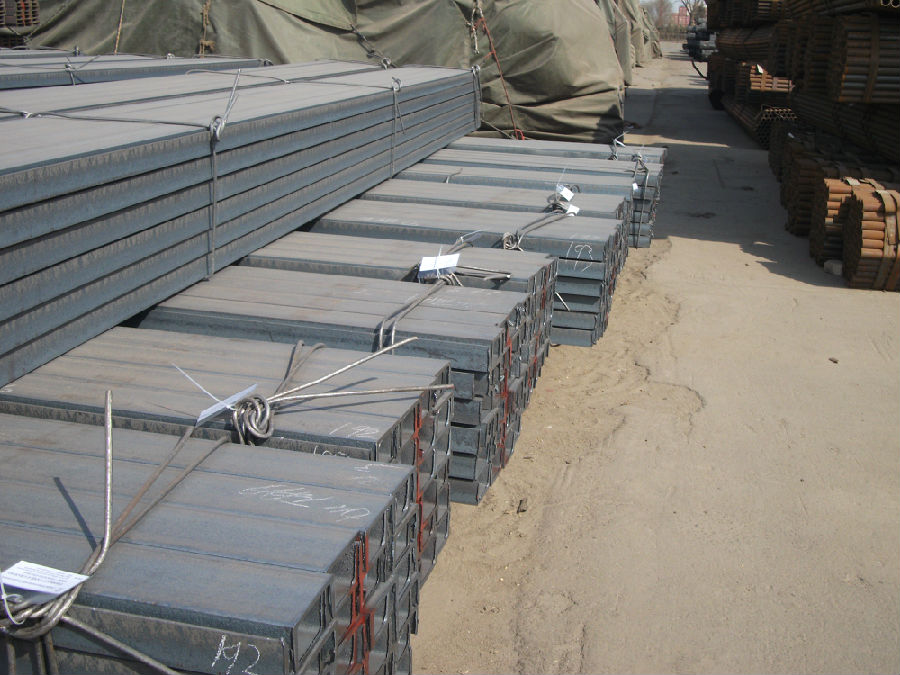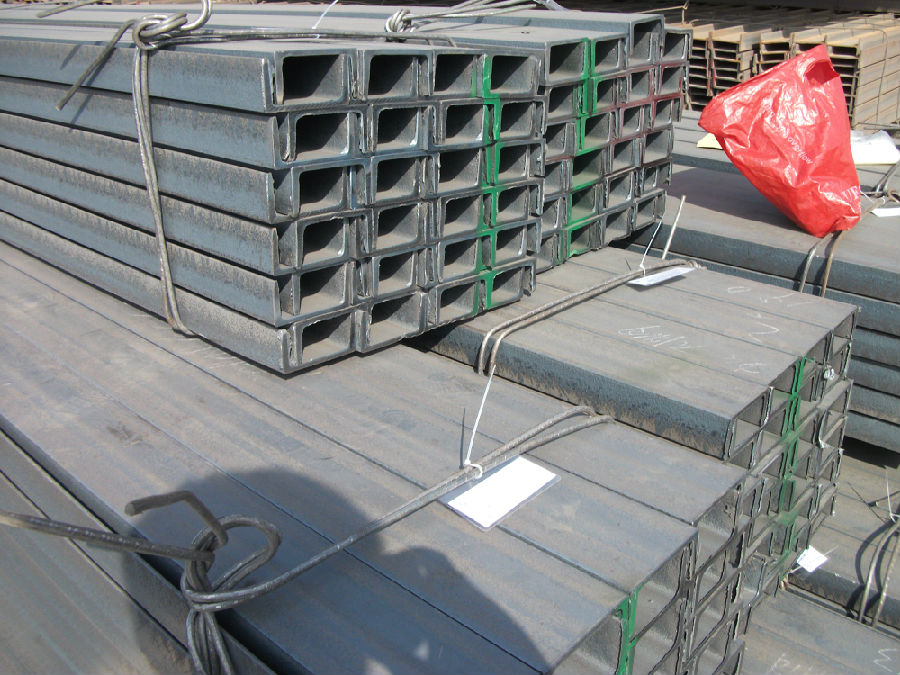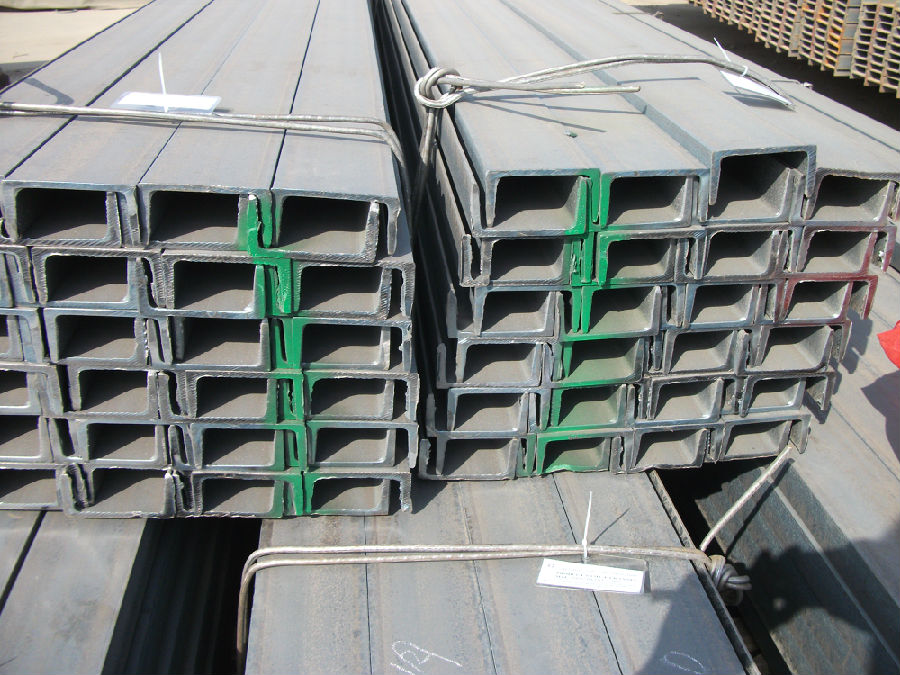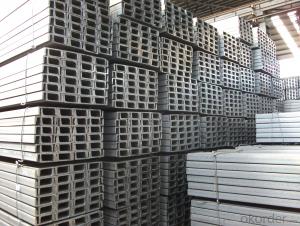S235JR S355JR SS400 A36 Q235 Q345 Hot Rolled Steel Channel Steel /C Channel Steel / U Channel Steel
- Loading Port:
- Tianjin
- Payment Terms:
- TT OR LC
- Min Order Qty:
- 25 m.t.
- Supply Capability:
- 32000 m.t./month
OKorder Service Pledge
OKorder Financial Service
You Might Also Like
Specifications
41*41 steel u slotted channel
Standard: 41x41, 41X21
Thickness: 1.5mm-3mm
zinc plated ,powder coated ,HDG,SS304
slotted
S235JR S355JR SS400 A36 Q235 Q345 Hot Rolled Steel Channel Steel /C Channel Steel / U Channel Steel
1.Standard:Standard: 41x41, 41X21
2.Wall thickness: 1.5mm, 1.6mm, 2.0mm, 2.5mm, 2.7mm (can produce based on your requirement).
3.Length: 3m, 5.8m, 6m .Any length is possible.
4.Surface Treatment: Pre-galvanized or hot-dip galvanized,Powder Coated.
5.Type: Slotted & Plained. Several slot size for you to choose
6.We can make back to back channel.
7.Many connecting sheets to connect two or several strut channels




- Q:What are the different types of steel channel connections?
- Construction and structural engineering commonly employ various types of steel channel connections. Some frequently used ones include: 1. Welded connections: The most prevalent steel channel connection involves welding the ends of multiple channels together, ensuring a robust and enduring connection. Welded connections find application where the channel load is relatively low and adjustability is unnecessary. 2. Bolted connections: For higher channel loads and the need for adjustability or removability, bolted connections come into play. Bolts and nuts are used to connect the channels, making installation and modification easier compared to welded connections. 3. Riveted connections: While riveted connections were once popular, they have become less common due to the labor-intensive process involved. Rivets are used to connect channels, offering good strength and durability. However, specialized tools and skills are required for installation. 4. Gusset plate connections: Gusset plate connections employ a steel plate, known as a gusset plate, to connect multiple channels. The gusset plate is usually welded or bolted to the channels, enhancing strength and stability. This type of connection is commonly found in truss structures and applications with significant channel loads. 5. Cleat connections: Cleat connections involve using a steel plate, called a cleat, to connect a channel to another structural member, such as a beam or column. The cleat is typically bolted or welded to both the channel and the other member, ensuring a strong and stable connection. Cleat connections are commonly utilized in steel frame construction. These examples represent a fraction of the steel channel connections used in construction and structural engineering. The choice of connection type depends on factors such as load capacity, adjustability, installation requirements, and design considerations.
- Q:Can steel channels be used for HVAC ductwork?
- Yes, steel channels can be used for HVAC ductwork. Steel channels are commonly used in construction for their strength and durability. When properly installed and sealed, steel channels can effectively distribute air throughout a building for heating, ventilation, and air conditioning purposes. They can be customized to fit specific ductwork designs and are suitable for both residential and commercial applications. Steel channels also provide a fire-resistant option for HVAC ductwork, making them a popular choice in many buildings.
- Q:Are steel channels recyclable?
- Yes, steel channels are recyclable. Steel is one of the most recycled materials in the world, and steel channels can be melted down and reused to create new steel products.
- Q:Can steel channels be used in load-bearing walls?
- Yes, steel channels can be used in load-bearing walls. Steel channels are commonly used in construction for their strength and load-bearing capabilities. They provide structural support and can handle heavy loads, making them suitable for use in load-bearing walls.
- Q:Can steel channels be welded together?
- Yes, steel channels can be welded together. Welding is a common method used to join steel channels and create a strong and durable connection. It involves heating the steel channels to their melting point and then using a filler material to fuse them together. Welding can be performed using various techniques such as arc welding, MIG welding, or TIG welding, depending on the specific requirements and the type of steel channels being joined. However, it is important to ensure that proper welding procedures and techniques are followed to achieve a high-quality weld that meets the required strength and integrity standards.
- Q:Can steel channels be used in DIY projects?
- Indeed, steel channels have the potential to be employed in do-it-yourself endeavors. Their versatility renders them suitable for a diverse array of uses, including the assembly of frames, supports, shelving, and even furniture. By virtue of their strength and durability, they confer structural stability upon your own creations. Furthermore, steel channels are accessible in a multitude of sizes and shapes, affording you the opportunity to procure an ideal match for your unique project specifications. Whether your undertaking is a modest DIY venture or a more substantial construction endeavor, steel channels have the capacity to function as a valuable asset within your inventory of materials.
- Q:Can steel channels be used for platform structures?
- Indeed, platform structures can utilize steel channels. Due to their robustness and endurance, steel channels are frequently employed in construction. They possess the capability to bear substantial loads and offer stability to the framework. The fabrication and installation of steel channels are easily accomplished, rendering them suitable for a variety of platform structures like walkways, mezzanines, and elevated platforms. Furthermore, steel channels are adaptable and can be tailored to meet specific design prerequisites. Furthermore, their exceptional resistance to corrosion is vital for structures exposed to outdoor elements or harsh surroundings. Overall, steel channels are a dependable and economically viable option for platform structures.
- Q:What are the common design codes and standards for steel channels?
- Steel channels must adhere to various design codes and standards to guarantee their structural integrity and safety. The most widely recognized codes and standards for steel channel design include: 1. The AISC (American Institute of Steel Construction) Steel Construction Manual provides specifications for the design, fabrication, and erection of structural steel for buildings. It offers guidelines for steel channel design, covering dimensions, loading conditions, and connection requirements. 2. The ASCE (American Society of Civil Engineers) publishes standards and guidelines for civil engineering structures, including steel channels. Their publication ASCE 7-16 Minimum Design Loads and Associated Criteria for Buildings and Other Structures specifies the loads and load combinations that steel channels should withstand. 3. The IBC (International Building Code) is a comprehensive set of building regulations adopted globally. It includes provisions for the design of steel channels and other structural elements, emphasizing safety, load resistance, and structural stability. 4. The EN (European Committee for Standardization) standards define specifications for various steel products, including channels. EN 10025-2 specifically covers hot-rolled structural steel channels, outlining their mechanical properties, dimensions, and tolerances. 5. The BSI (British Standards Institution) publishes standards for steel channels under the BS EN 10365 series. These standards address dimensions, tolerances, and technical requirements for hot-rolled steel channels used in construction. Designers, engineers, and manufacturers must comply with these codes and standards to ensure proper design, fabrication, and safe usage of steel channels in diverse structural applications. Adhering to these guidelines promotes consistency, quality, and structural integrity within the construction industry.
- Q:If there is a cylinder, the diameter is about 1000mm, height is about 1000mm, similar to the kind of pressure vessel, plate thickness 6mm 304 of stainless steel, want to use 4 channel steel leg support, how big is appropriate? How do you calculate it?
- This is the main push rod stability problem, the strength of individual words feel no need to calculate, the compressive strength of steel are great, you can also check the tensile strength of 304 stainless steel is 205MPa, the compressive strength will certainly be much higher.
- Q:What are the different methods for surface preparation of steel channels?
- There are several different methods for surface preparation of steel channels, each with its own advantages and suitability for specific applications. Some of the common methods include: 1. Mechanical Cleaning: This method involves using abrasives such as sandpaper, wire brushes, or grinding wheels to physically remove any loose rust, scale, or old coatings from the surface of the steel channels. Mechanical cleaning is typically done manually or with the help of power tools and is a cost-effective way to prepare the surface. 2. Chemical Cleaning: This method involves using chemicals to dissolve or loosen contaminants on the steel channel's surface. Acid-based cleaners are commonly used, such as phosphoric acid or citric acid, which can effectively remove rust and other surface contaminants. Chemical cleaning is often used for removing heavy rust or scale buildup. 3. Power Tool Cleaning: This method involves using power tools like power sanders, rotary hammers, or wire brushes to remove loose rust, scale, or old paint from the steel channel's surface. Power tool cleaning is usually faster and more efficient than manual methods, making it ideal for larger surfaces or areas with heavy contamination. 4. High-Pressure Water Cleaning: This method involves using high-pressure water jets to remove loose rust, scale, or old coatings from the steel channel's surface. High-pressure water cleaning is effective for removing surface contaminants without causing damage to the metal. It is commonly used in industrial settings where large areas need to be cleaned quickly and efficiently. 5. Abrasive Blasting: This method involves using compressed air or water to propel abrasive materials, such as sand, grit, or steel shot, onto the steel channel's surface. Abrasive blasting is highly effective in removing rust, scale, and old coatings, leaving a clean and profiled surface ready for further treatment or coating. It is commonly used in industries where a high-quality surface finish is required. It is important to select the appropriate method for surface preparation based on the condition of the steel channel, the desired surface finish, and the specific requirements of the application. Proper surface preparation is crucial for ensuring good adhesion of coatings and extending the lifespan of the steel channels.
1. Manufacturer Overview |
|
|---|---|
| Location | |
| Year Established | |
| Annual Output Value | |
| Main Markets | |
| Company Certifications | |
2. Manufacturer Certificates |
|
|---|---|
| a) Certification Name | |
| Range | |
| Reference | |
| Validity Period | |
3. Manufacturer Capability |
|
|---|---|
| a)Trade Capacity | |
| Nearest Port | |
| Export Percentage | |
| No.of Employees in Trade Department | |
| Language Spoken: | |
| b)Factory Information | |
| Factory Size: | |
| No. of Production Lines | |
| Contract Manufacturing | |
| Product Price Range | |
Send your message to us
S235JR S355JR SS400 A36 Q235 Q345 Hot Rolled Steel Channel Steel /C Channel Steel / U Channel Steel
- Loading Port:
- Tianjin
- Payment Terms:
- TT OR LC
- Min Order Qty:
- 25 m.t.
- Supply Capability:
- 32000 m.t./month
OKorder Service Pledge
OKorder Financial Service
Similar products
New products
Hot products
Related keywords




























